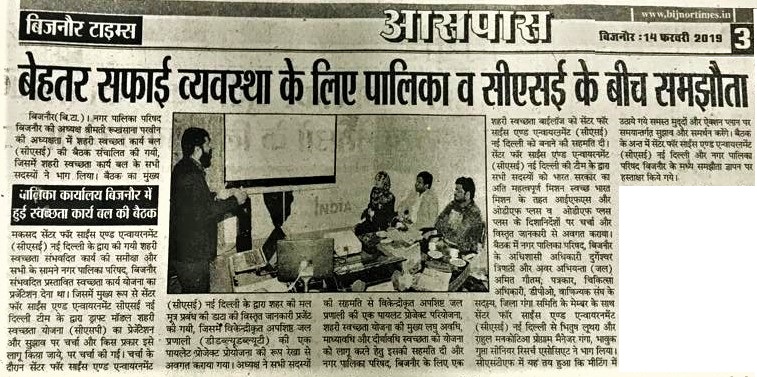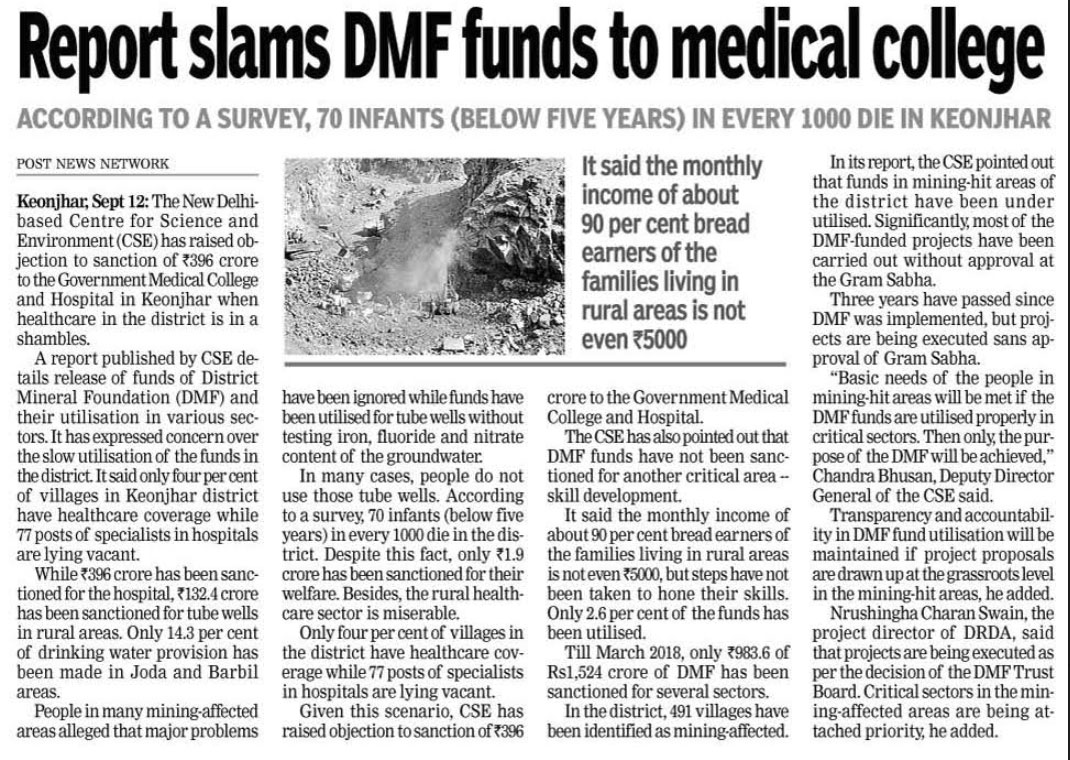State-level Meeting: District Mineral Foundations (DMF) Implementation
September 7, 2018 -- Raipur, Chhattisgarh (Click here for Program Agenda)
September 11, 2018 -- Bhubaneswar, Orissa (Click here for Program Agenda)
CSE is organizing state level meetings in Chhattisgarh and Orissa assessing the implementation of the District Mineral Foundations (DMF).
The Centre has been working for over a decade to understand the challenges in India’s mineral-bearing regions. In March 2015, through an amendment to India’s central mining law, the Mines and Minerals (Development and Regulation) Act (1957) was instituted to “work for the interest and benefit of persons, and areas affected by mining related operations.”
This step was taken to address environmental injustice inflicted upon communities living and working in and around mining areas in the country.
In every mining district, District Mineral Foundations (DMF) were set up as trusts to function as non-profit bodies. The idea was to improve the lives and livelihoods of some of the poorest and marginalized communities including Scheduled Tribes and other traditional forest dwellers.
CSE, in the last three and a half years has focused on assessing the implementation of DMF in key mining states and districts -- looking into aspects such as administrative issues, people's participation in decision-making, and how DMF funds are being spent.
The Centre has recently released its national analysis on DMF, titled People First: DMF Status Report 2018. This analysis has given considerable attention to 5 key states. Out of these Chhattisgarh and Odisha are in the top 3 in terms of DMF collection.
The DMF collection in Chhattisgarh is Rs 2,746 crore till April 2018. The topmost districts in the state in terms of DMF collection are Korba (Rs 674 crore), Dantewada (Rs 216 crore) and Raigarh (Rs 122 crore). However, there is no scope for representation of mining-affected communities in the district DMF bodies in Chhattisgarh. The DMF body is dominated by district officials and political representatives from mining areas. The only ‘people’s representation’ comes from a few elected members of Panchayati Raj Institution (PRI). Therefore the CSE team has particularly evaluated DMF implementation in these 3 districts.
Odisha, on the other hand has the highest share of DMF funds in India with a total cumulative accrual of Rs 4,453 crore till March 2018. But, over 33 percent of this amount has been spent on building roads and bridges. As a result, much more crucial problems, such as those of providing access to healthcare, have remained neglected. The top four districts in the state in terms of DMF collection are Keonjhar (Rs 1,524 crore), Angul (Rs 836 crore), Sundargarh (Rs 780 crore) and Jharsuguda (Rs 275 crore). CSE is evaluating these very districts in its upcoming meeting in the state.
Reports
July 18, 2018
PEOPLE FIRST: District Mineral Foundation (DMF)
September 06, 2018
District Mineral Foundation (DMF), Odisha Report 2018
September 06, 2018
District Mineral Foundation (DMF), Chhattisgarh Report 2018
Press Releases
Media Coverage |
| dailypioneer | September 12, 2018 Rs 5,000 cr in DMF: No Need-based planning for funds use |
 |
 |
 |
 |
 |




Share this article